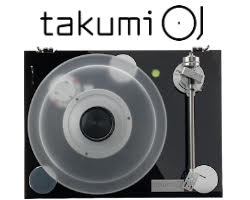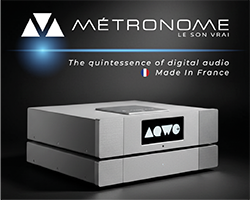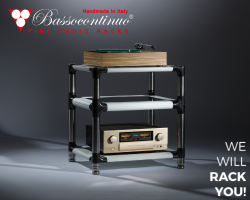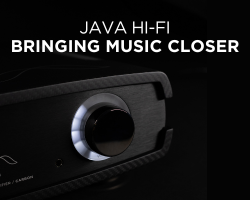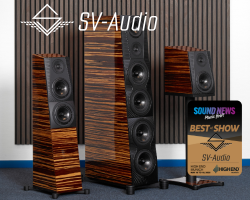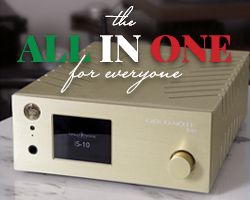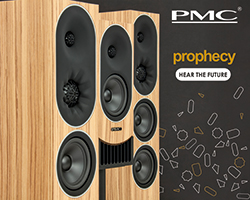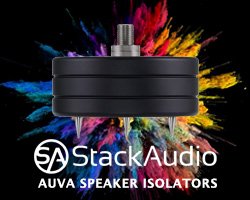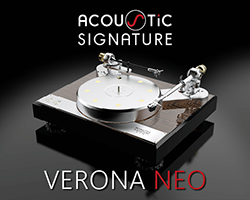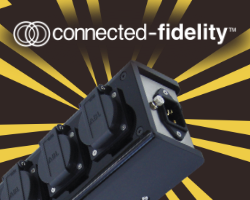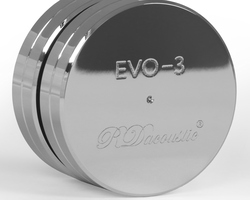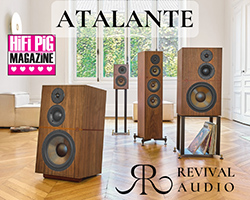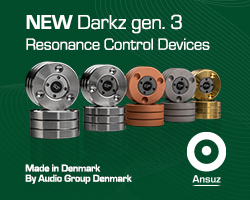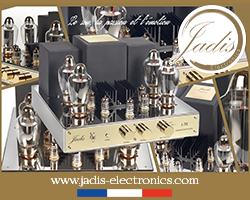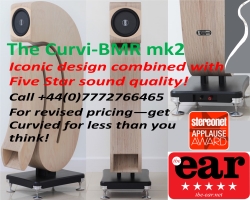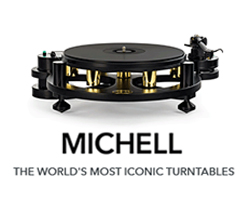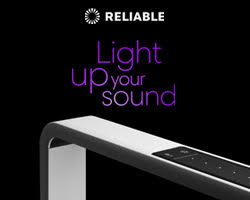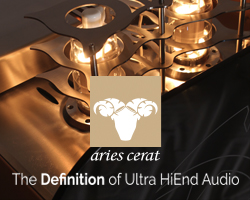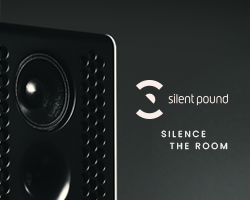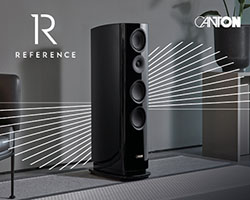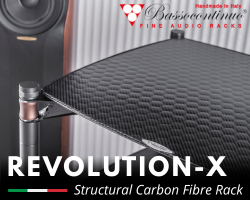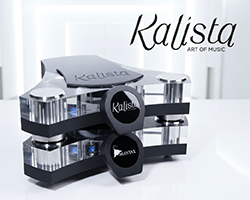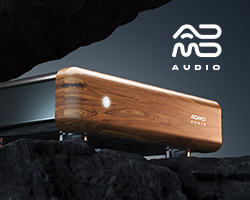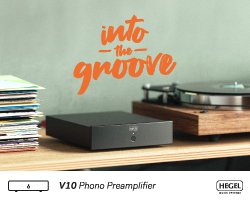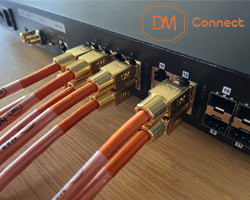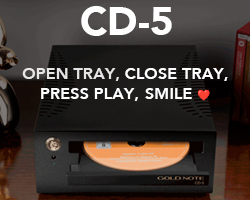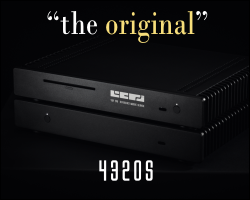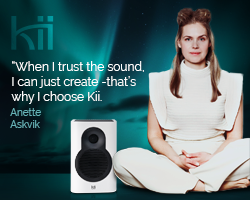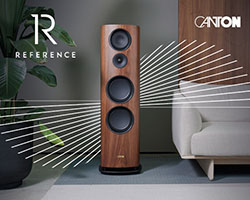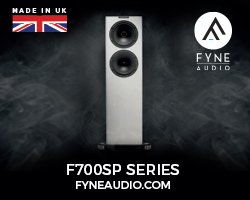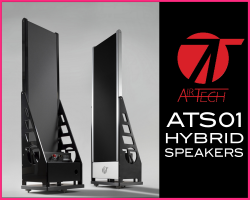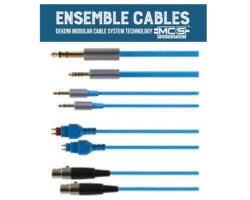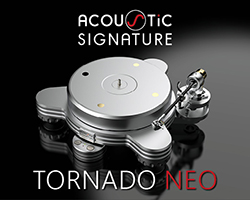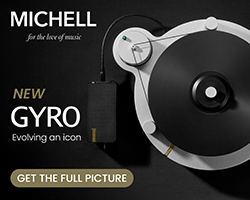RAIDHO TD 2.2 LOUDSPEAKER REVIEW
Raidho TD 2.2 loudspeakers are made in Denmark and cost a not inconsiderable £38 000. Stuart Smith takes a listen and puts this price into context.
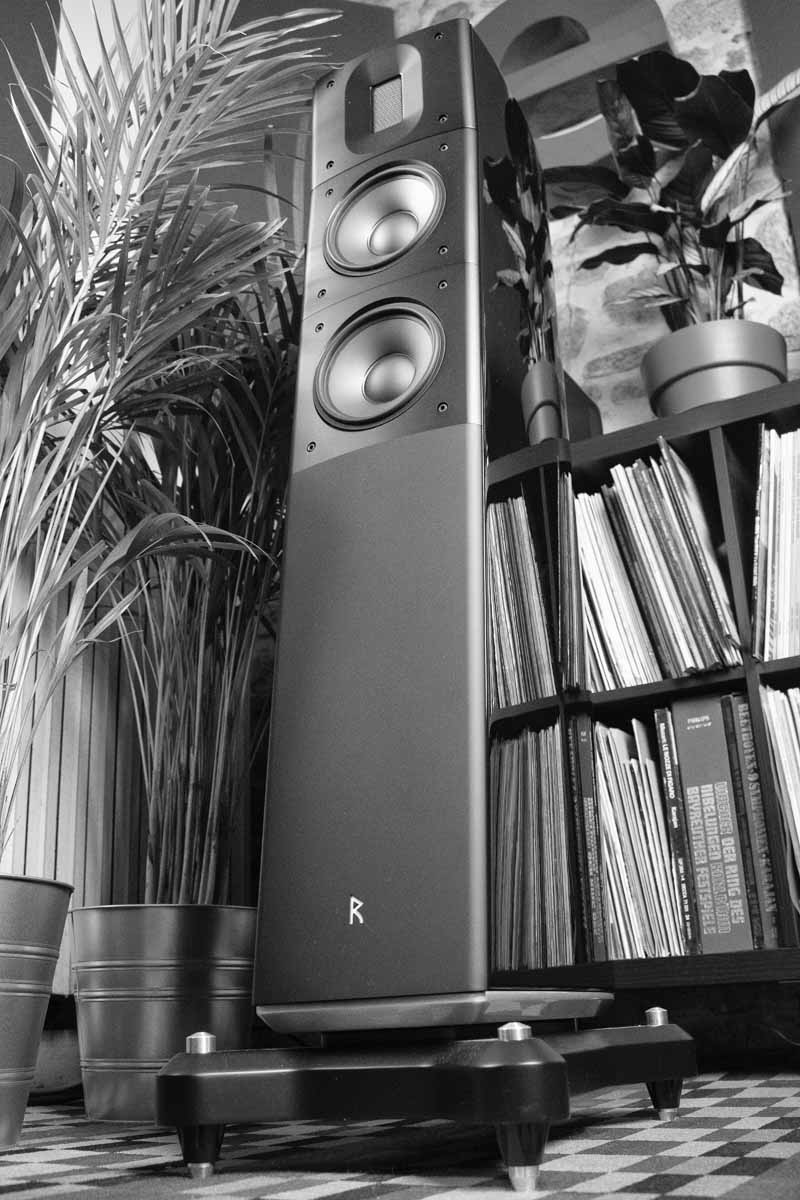
A front view of the Raidhos showing off their two bass-mid drivers and the ribbon tweeter
HISTORY
Raidho is part of the Danish Dantax group of companies that also includes GamuT and Scansonic. They have been trading for around 50 years. Dantax began life buying in the bits and bobs that go to make a loudspeaker from other companies and then assembling them into their own designs.
ScanSpeak will be a name that will be familiar to many readers as they are very well known for manufacturing drivers – Dantax took over their factory in 1977 whilst at the same time adding Scansonic to the brand’s stable. They invested in new factory facilities in the late ‘70s and then in 1984 Dantax floated on the Danish stock exchange. As well as making their own loudspeakers and drivers Dantax also operated as distributors for such brands as Akai, Sanyo, Fisher, and Schneider.
Raidho came into the picture in 2009 with Scansonic being a “sub-brand” developed and built by Raidho. The family genetics are pretty obvious if you look at the Raidho and Scansonic ranges of speakers.

The reflections on the side panels indicate the level of fit and finish on the TD 2.2s
I’ve admired all three of Dantax’ brands when at shows and always thought they sounded phenomenally good, although the prices of the Raidho offerings are wallet cringingly expensive. We approached them a couple of months ago with a “Can we get a pair of your speakers for review?” email and were surprised when we got the response “Of course, which of our flagship range do you want?” Now, this kind of a response is a bit of a double-edged sword – do we go for the top of the range knowing full well that they will be too big for the space and leave us nowhere to go (though we know reviewing such a product would certainly generate a lot of reader interest) or do we do the sensible thing and go for something a little more practical. Of course, we were the height of sensibleness and went for the TD2.2 floorstander. There are five other speakers in this range including the TD1.2 standmounter and the TD4.8 topping the range. The latter is a beautiful behemoth of a loudspeaker with six bass drive units, 2 midrange units and the Raidho sealed ribbon tweeter that is shared across the range. You aren’t going to get much change out of €140 000 if you buy the top model. You don’t get much change out of £40K with the TD2.2s either, coming in as they do at £38 000 in their basic form. Add a custom finish and trim and the price goes up accordingly.
BUILD AND FEATURES
The cardboard boxes the TD2.2s arrived in are impressively large and were a firm favourite with Ali the younger of the Hifi Pig cats, who used them as a perch for the duration of their stay with us. The TD 2.2 are a 2.5 way design with rear-firing bass reflex ports with the drivers being a 6.5” Raidho Tantalum Diamond (RTD) midbass driver and another 6.5” RTD for the bass. The tweeter is the Tantalum Diamon Ribbon model made by Raidho. The mid-bass driver is a five-layer construction using the company’s Tantalum-Diamond cone to provide better damping. The speaker uses an edge-wound titanium voicecoil. The tweeter is a quasi-ribbon affair that comes from the TD4.8.
Given the size of the boxes, I had expected the TD2.2s to be much more imposing in the room, but the truth is that despite their deep cabinets they really don’t look that big at all. Their actual size is 200 x 1150 x 520mm and so they are nearly half as deep as they are tall.
The front baffle is angled back and stepped (which I assume is to help with time alignment) and the overall shape looking from the top is not unlike the prow of a boat.
The models we got sent were in a VERY shiny piano black but they are available in walnut burl…or any colour you fancy. They weigh in at 45kg a piece which is pretty manageable to be fair.
The speakers are already mounted on a substantial four-legged plinth that you level by turning the top knobs on top of them – simple and effective.
There is a single pair of binding posts.
There is nothing to say about the build of these other than it is superb and they look stunningly good.
Given that these speakers are pretty hefty, the setup was an absolute breeze, aided in no small part by that plinth and easily adjustable/leveled feet. The speakers don’t really come with any instruction manual just a small booklet that tells you how and where to set them up…which I of course completely ignored.

A close up view of the tweeter on the TD 2.2
Once in place and I’d got them well away from the side and back walls I sat down to have a quick listen and to read the setup pamphlet and then realised I had them set up wrong – but not that far wrong to be fair. Rather than pointing the speakers directly at the position where the middle of your head would be, Raidho suggests you fire each speaker to the side of your head. A laser setup device by Alan Clark helped me no end in this and I had them set up millimetre perfect within a matter of a few minutes. Raidho’s suggested setup is better, it has to be said!
SOUND
Get your wellington boots on because this is going to be a bit gushing. There are in actual fact very few truly awful designs of HiFi out there at the moment and there is a lot of very good stuff that comes through our doors for review. However, seldom does a product arrive, get plumbed in and garner the response that these speakers got. Within about an hour of setting the speakers up into our reference system it was clear that these were very special speakers indeed and a conversation was had very quickly about selling our Avantgarde DUOS and getting a pair of these ordered. Was this all Emperor’s new clothes? Read on.
The kit used for this review was the usual suspects and included a pair of Merrill Thor Class D monos, a Leema Libra DAC/Pre, and a combination of Auralic Aries G1 and Melco. Cables were by Way, Atlas, and Tellurium Q and a DIY mains transformer in line before all the electronics. This is a system that changes very rarely and one I listen to on a daily basis…I know it well and love it as a reference as it’s revealing but also musically enjoyable.
Spatially these Raidhos do something very interesting indeed! The term “three-dimensional” gets bandied around a lot when talking about loudspeakers but these really do present the stereo image in a very, very “reach out and touch” kind of way. As I’m listening to Gesaffelstein’s Aleph there is the impression that there are sounds coming from the very far right and far left of the speakers and well into the room. It’s almost as if there is a bubble of music around me with the left and right emphasis being more prominent than the up and down. When a sound comes from the centre of the mix it’s almost like one of those camera shots in films that goes from a distant image of a face to zooming in to being up-close. This takes a moment or two to acclimatise to, but once you get it you really can’t ignore it – I found it highly addictive and I would say that this imaging is a key feature of these speakers. No, the speakers don’t disappear, but they come bloody close to it. There is a sense that you can reach out and pick individual sounds from the air around you. Does that all sound artificial and contrived to beguile the listener into falling in love at first listen? I don’t know the answer to that but having listened to the Raidhos for ages now I don’t find myself being anything but astounded every time I turn them on and play music.
As well as having that three-dimensionality to the sound there is also clear and defined layering of different sounds in the mix in every dimension – again, that reach out and touch quality. I listen to a lot of techno that is very well mixed and with meticulous attention paid to where sounds sit in the stage as well as to psychoacoustic effects – the Raidhos suit this kind of music absolutely perfectly. Even at low volumes, I’m not getting anything but detail across the frequency range …and that image. Effects on individual sounds are not just easy to hear but they are unmissable. And I suppose that’s one of the strengths of this speaker – you don’t have to concentrate on listening to get the best out of them. Decays and reverbs were absolutely perfectly done. Liken it to having your first pair of specs – you didn’t really think you needed them but once you put them on it became clear you did. Or for the more psychedelically attuned – well, you know where I was going to go with that analogy already! My one criticism here is that to get that full effect of the three-dimensionality you do need to be in the hot seat, though it’s still very impressive left or right of this – I’d be happy to be sat a metre left or right and feel I wasn’t missing out on much other than the nth degree of their spatial presentation.

Around the back of the TD 2.2s showing the two bass ports, the boat shaped design and the single pair of binding posts
I did warn you this was going to be a bit gushing!
On the album I mentioned there’s a lot of bass, but never once did I feel that it was overblown or exaggerated. Bass was always tight and in harmony with the rest of the mix. Bass is one of the compromises that the TD2,2 does have to make and that’s purely down to the size of the enclosure and the size of the drivers – they are just never going to move as much air as the 2 x 12” drivers per side as found in our Avantgarde Duo XDs. With that said, we are splitting hairs here and, personally, I didn’t miss that kick to the chest feel. I also didn’t feel the need to whack the volume up beyond moderate levels, but in the same breath, I never found myself feeling like I was missing anything from the tunes I was listening to. However, it is worth hitting that volume knob (read remote) and turning the volume up to high levels as it’s pretty astounding in that what happens is you lose nothing of their spatial presentation and just get more volume and impact. Very much my kind of presentation. Popping on the old school tinged The Bionaut’s “Everybody’s Kissing Everyone” is stunning and gives a goosebumps on the floor at four in the morning experience. That classic house bassline is relentless and sounds dry and as it should. Pads wash over you but everything is kept in focus – as the Shamen said “Hyperreal”. I think hyperreal is quite a good description of these speakers, but then that suggests artifice and I don’t think these present anything but what the guy behind the desk (or in front of the desk I suppose) was wanting you to hear.
As I’m flicking through the virtual record shelves on the tablet I was looking for something female vocals-wise but got as far as Hawkwind’s Hall of the Mountain Grill. It popped out at me and only a few days earlier I’d responded to a question on a Facebook group about when HiFi first made sense to me and it was whilst playing this album on a modest little system that had a pair of Wharfedale Diamonds making the sounds. What grabbed me was how the sound of this album was presented spatially and listening to it now I’m transported back to those days of Purple Oms and that first feeling of really getting that that was one of the things I enjoyed about proper HiFi. And that’s what I’m getting here – only without the acid! Though this record did still get my head spinning on these speakers – in a good way! Wind of Change sounded utterly sublime!
Anyway, I did finally find some female vocals in the form of Nolwenn Leroy and her excellent album Bretonne. The song Tri Martolod (Three Sailors) is a traditional Breton tune and has the usual suspects with regards to Celtic instruments, but her voice is allowed to come to the fore without losing any of the impact of the music. You can easily pick out the instruments and they sound as natural as I’ve heard them on a HiFi. Details in the music and mix are there in spades, but by the same token I never once felt that I was being overloaded with information. Indeed, I’d say that these speakers manage to pull off something pretty special in this respect – a huge amount of detail and information but without ever a feeling of sensory overload. Switching to David Crosby’s Croz by way of balancing out the genders, what is apparent is Crosby’s stunning vocal delivery that whilst being beautiful, also sounds somewhat world-weary. It is small details like this that separate the outstanding products from the simply very good. There is subtlety when the track delivers it and there is power when it’s there too. Again, this is delivered without the listener feeling any sense of overkill or overload. Set That Baggage Down off the Croz album has hard-panned guitars and (again) the mix is easy to pull apart and “see”. Small inflections in voicing and instrumentation really shine when these speakers are playing – Natalie Merchant’s Ladybird is as well done as I’ve ever heard…anywhere…at any price. Stunningly beautiful and spine-tinglingly emotionally portrayed. Small taps on the hats are there and easy to hear but don’t take over – again, highly detailed without overkill. I rewind this track and play it at high volume and there is nothing but composure and class presented. Not once do I feel that I’ve pushed the speakers too far. “In the room” is another term bandied about by review folk, but this really is as good as I’ve heard. Merchant’s voice is projected into the room with a reality and presence that is hard not to connect with. Towards the end of the record, the strings and orchestration just lift the track and that electric guitar just cuts through the mix and is panned to the left – like I say, easy to pick the mix apart but likewise easy just to fall into it and enjoy it in all its glory!
I’d like to say that I tripped these speakers up with a particular genre or other, or a piece of music that pushed them beyond what they were comfortable with. I didn’t and couldn’t, despite my best efforts. EVERYTHING I played through the Raidhos sounded fresh and new with the caveat that it needed to be well recorded and mixed.
I’m going to close this part of the review off by talking about the track Contact off Daft Punk’s Random Access Memories (Qobuz Hi-res version) record. I know it’s a track I use again and again, but it’s a tune that can trip up even the best of speakers. It’s freaking glorious on these speakers and in this room. Dynamically speaking these have it all (pretty much) and when the beats come in on this tune you sit and take notice. Likewise when the organ sounds come in at the start you take notice. It’s not a mush of sound (it never has been and why we love it as a test tune) but it can sound less than great on a poorer system. There is also the bass (it’s low and booming in the mix) that can get out of control on some systems…not here, though bass nutters may feel the need for a bit more oomph. The small details in the noises towards the end of the track are all there for you to hear, and whilst they come to the fore they never overplay the constant background music. Again, utterly stunning.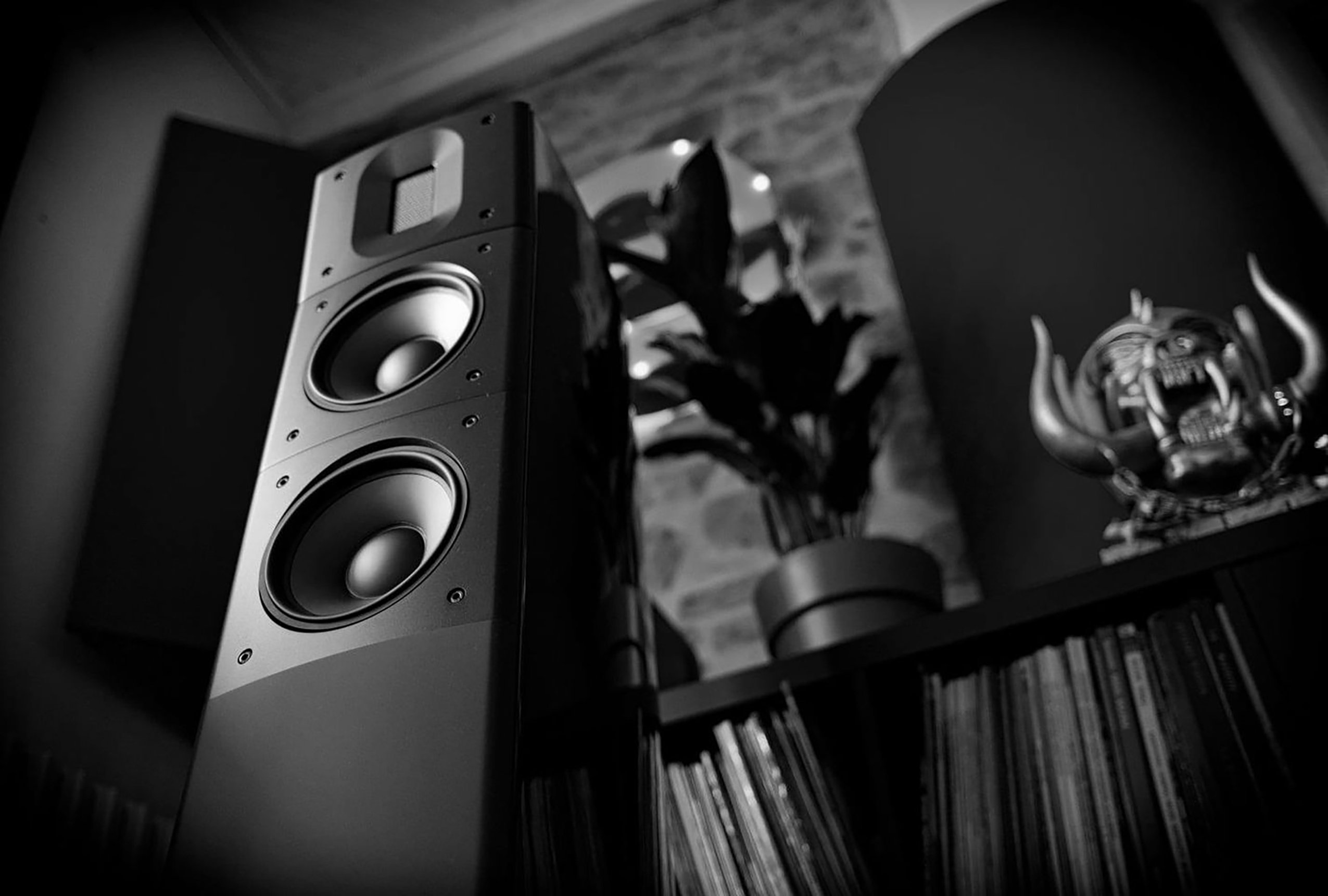
CONCLUSION
One of the best loudspeakers I have ever had the pleasure of listening to at any price. The Raidhos excel in delivering a connection to the music that is rare. Detail without overload is their forte. I would say that they represent pretty much everything I am looking for in a speaker – they allow me to simply get on and enjoy my music without having to try. In this room I don’t think I would want to go with the bigger models, but nor do I think the standmounts from the range would fill the space adequately – these are as near to perfect as I have heard in this room, though perhaps the extra driver in the TD 3.2 or the pair of bigger drivers in the TD3.8 would satisfy that urge for more movement of air.
They wield considerable power and do bass very well, although it is not as much a visceral experience as with our Avantgardes. But whilst they may not have that bass oomph, they do caress you with beautifully presented music across the scale and they do go low. Really, I am struggling really hard to find a fault with them other than their price, which is considerable given the speakers’ proportions.
Do I think these represent excellent value for money? Nope, I don’t! However, at this price value is hardly going to be a consideration for prospective buyers and so I’m pretty much discounting it. I would love to say that they offer incredibly bad value for money, but, despite their asking price for such a relatively small speaker, I can’t help thinking that if I had the means they’d be taking up permanent residence – or the 3.2…or the 3.8s.
Fit and finish are great as you would expect and I have looked hard to fault them in this respect.
I don’t know if the accuracy they portray is real or somehow artificially enhanced. To my mind I don’t find them artificial sounding, in fact, I’d go as far as to say they sound utterly natural, unforced, and effortless. That last word (effortless) sort of sums the Raidhos up beautifully, and I can sit for literally hours in front of them without feeling the need to get up. I find myself getting lost in the music and feeling part of it. Result!
The award these speakers are getting sort of puts value for money to one side and I need to do that to be able to try and convey what a thrilling experience it has been to have them in the house for a couple of months. The fact that they cost as much as a very nice car is neither here nor there in the realms of this level of fidelity!
I waffle on a good deal about really good HiFi being “Machines For Joy” and these really do fit that description very well!
AT A GLANCE
Build Quality:
Packaging is simple but effective. The actual speakers I can’t fault.
Sound Quality:
Detail and accuracy are the main takeaways for me. Bass goes low but not overpowering or domineering – some may want more air moved. Spatially they present music in a three-dimensional way that I love. Clear and precise throughout the sonic range without anything overpowering the other. Go loud effortlessly. Easy to listen to and fantastically revealing at the same time. Bass was never going to be of earth trembling proportions but these do go well low enough at 32Hz, are very bouncy, and yet seemingly accurate.
Value For Money:
They are £38 000. Like it or lump it! If that’s their asking price then so be it. They aren’t good value and spending this much on a pair of speakers is hard to justify. BUT, had I the means then I would!
We Loved:
The effortless musicality of the presentation and the spatial dimension to the stereo soundstage
Tight and tuneful bass
Great dynamics
Detail without fatigue
A luxury finish without being over the top
Easy to accommodate, though do read their setup instructions… just like I didn’t
We Didn’t Love So Much:
I am seriously struggling to find anything I didn’t like.
Elevator Pitch Review: A high-end loudspeaker with a high-end price tag but with a performance to match. They behave well with whatever the music’s genre. The spatial presentation and three-dimensional quality to the way they put the music in front of the listener really is addictive, as is the level of detail and clarity they put forth, whilst still remaining very easy to listen to for long periods. If you are looking for a more hefty bass (these are no slouches) then check out the couple of models above these.
Price: £38 000

Stuart Smith
Specifications
Topology: 2,5 Way
Bass Loading: Bass reflex Port in rear
Impulse optimized
Drivers: 1 x Raidho TD Ribbon Tweeter
1 x 6,5” Raidho Tantalum Diamond midbass
1 x 6.5” Raidho Tantalum Diamond bass
Crossover Point: 400Hz and 2.4 kHz stepped slope
Frequency Range: 32Hz – 50 kHz
Sensitivity: 88dB
Nominal Impedance: 6 Ohm
Power Requirement: 50 – 150 Watts
Finishes: Piano Black, Walnut burl veneer or any colour to order
Dimensions: 200 x 1055 x 520 mm
(With feet 320 x 1150 x 520)
Footprint 200 x 520 mm
Weight 45 kg































































